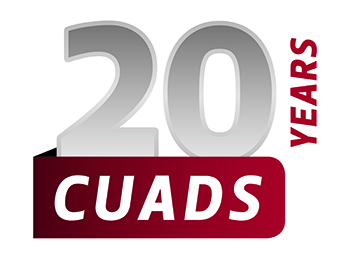Though we feel inhibited by the COVID-19 pandemic, it is imperative to reflect and realise how far we have come as a centre and as a UFS community in our efforts to ensure that we embrace and welcome students with disabilities at our institution.
As the current Head of CUADS, I also had the privilege of celebrating the 10th year of existence of CUADS in 2011, while being the first permanently appointed Sign Language interpreter at the UFS in 2009. I have since learned that it takes courage to persevere. This is not only applicable to how resilient our students with disabilities are when facing everyday challenges that their environment poses to them (including physical, social, and attitudinal barriers), but also in the work we do as the centre.
A CUADS staff member requires courage to make a difference, also in facing challenges (including systemic, procedural, and attitudinal barriers) when wanting to level the playing field for our students with disabilities. It is finding an opportunity to change the way we do things as an institution and look for possibilities to eliminate exclusionary practices and to integrate students with disabilities as part of our UFS community. Therefore, courage also means being agile and responsive to the needs of our students with disabilities. Here we have also witnessed how fellow students had courage to challenge their discomfort and become allies for students with disabilities. More recently, due to the COVID-19 pandemic, we have witnessed how students with disabilities generated self-agency through their capacity to act independently and negotiate their own access needs.

Disability and universal access advocacy
Since 2011, some functions that resorted under CUADS have been integrated with the rightful departments, i.e., alternative exam arrangements with the Exam Division, Sign Language interpretation with Interpreter Services, and tutor assistance with the A_Step Programme in the
Centre for Teaching and Learning; the UFS managed to secure First Car sponsorship of two vehicles to assist with accessible transport between the South Campus and the Bloemfontein Campus; established CUADS offices on the South Campus and the Qwaqwa Campus, with CUADS coordinators appointed; formalised Orientation and Mobility training for students with visual impairments to enable independent movement around our three campuses, and commenced with the tactile paving project on the Bloemfontein Campus; and held two successful biennial CUADS formals.
Specific highlights are definitely the name change in 2015 from the Unit for Students with Disabilities to CUADS and the adoption of universal access as an approach to include students with disabilities; and becoming part of the UFS transformation agenda through the UFS Integrated Transformation Plan (ITP).
Since the inception of ITP mental health conditions that was added as a category of students supported by CUADS, Disability Sport has been part of the Integrated Sport Strategy under the auspices of
KovsieSport; disability and universal access advocacy is integrated with the ITP Advocacy, Awareness and Analysis Strategy; and universal access considerations are included in the UFS Estates Technical Manual for infrastructure projects. Last but not least, this year the UFS Council approved our policy on Universal Access and Disability Support for students with disabilities. These achievements could definitely not derive from a single person, but rather a collective, by being courageous in achieving our desired UFS community.
An inclusive environment for all
Kindness is experienced when the talents, abilities, and potential of students with disabilities are recognised. It is exhibited through behaviours of friendliness, generosity, and being considerate towards our students with disabilities. Here, I would like to specifically thank the CUADS staff for their determination in sharing what they know our students with disabilities are capable of and believing in their potential. I celebrate your courage and also salute you for your kindness towards our students, because it is a humanising commitment. We also have gratitude towards students who presented kindness by assisting our students with disabilities with human support, i.e. tutoring, amanuensis, mobility, etc.
Since 2011, we have also recorded an average of forty graduates with disabilities per year. Every graduation is special, but more so when students with disabilities (from diverse backgrounds) walk across the stage – one is reminded of their courage, how difficult it was to get to that moment. To our CUADS alumni and students, we salute you, we embrace what we learn from you, and your kindness when disclosing the difficulties that you have experienced assists in paving the way for students yet to come.
To the rest of the UFS community, let us be brave, because confidence makes it much easier to show compassion for others, the willingness to adapt to ways that are inclusive of all, including our students with disabilities.